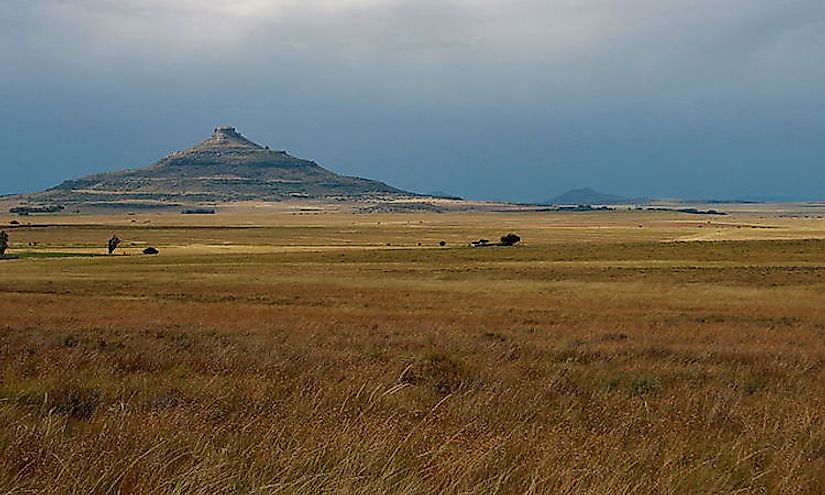Erosion Landforms: What Is An Inselberg Or A Monadnock?

An inselberg is an isolated hill, ridge, or small mountain that abruptly protrudes out from a virtually level surrounding plain. The word inselberg translates to “Island Mountain” in German, and it was first used by Wilhelm Bornhardt in 1900, a geologist who found the landforms in southern Africa. The word monadnock is of Native American origin and it refers to a solitary hill rising above the flat area surrounding it.
Formation of an Inselberg
An inselberg is one of the landforms resulting from erosional processes. For an inselberg to form, there has to be pronounced variations in the level of weathering of the land surface.
Inselbergs arise from rocks which erode at a slower rate than that of the surrounding rocks. The landform consists of an erosion-resistant rock which protects a softer rock such as limestone. The resistant rock remains isolated as ongoing erosion erodes the less resistant rock around it.
Volcanic processes are responsible for the rising of the resistant rock above the surrounding area. The resistant rock is able to resist erosion due to its tight joints. Once formed, inselbergs appear steep sided.
Over time, inselbergs may be destroyed through the marginal collapse of exfoliation sheets and joint blocks.
Types of Inselbergs
A massive inselberg is referred to as a bornhardt which manifests as dome-topped, bare, and steep-sided. A bornhardt mostly occurs in arid and semi-arid regions, and it rises more abruptly than other inselberg types. Examples of bornhardts include the Pic Parana in southeast Brazil.
Famous Inselbergs
Some of the world’s most impressive inselbergs have been sighted in Africa and the Middle East. In Africa, inselbergs have been recorded in countries including South Africa, Namibia, Burkina Faso, Tanzania, and Angola. The Spitzkoppe inselberg, rising to 3,600 feet in the Namib Desert, is the tallest of this landform in Africa. Rising to 2,625 feet are the Sandstone Inselbergs which characterize the landscape in southwest Jordan. Stone Mountain in the US state of Georgia is a monadnock rising to 785 feet. Another famous inselberg is Uluru/Ayer's Rock, a non-granitic inselberg located in Central Australia. Other countries with inselbergs include Brazil and Finland. There exist inselbergs which have been transformed by ice sheets in the northern region of Sweden.
Importance of Inselbergs
The isolation of inselbergs promotes the development of micro-climatological conditions on the landforms. These conditions provide a fertile ground for the growth of unique flora which is adapted to the particular ecological environment. Some inselbergs have been declared as floral hotspots due to the set of vegetation present in them. The vegetation often remains undisturbed since the inselbergs do not support agriculture and are thus spared of human activities.
Inselbergs in some parts of the world, particularly Eastern Africa, have become havens for life. Soils trapped by the landforms encourage the growth of trees while the surrounding area is only home to short grass. On the inselbergs are hollows which act as catchments for rainwater thereby sustaining present life. Reptiles, birds, and mammals including the lion have been spotted in the inselbergs.











